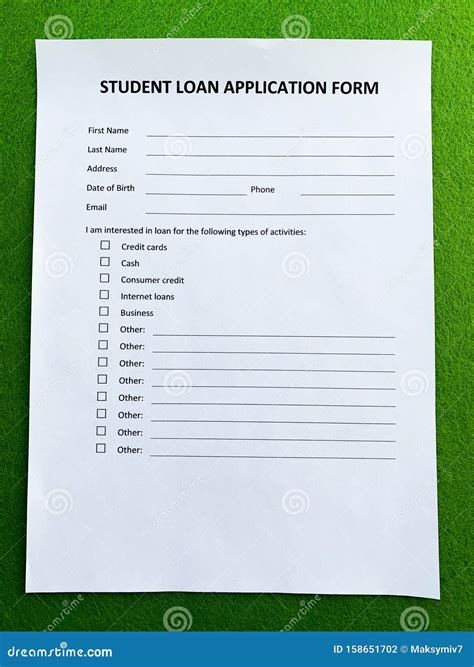Navigating the student loan application process can be daunting. {Student loan application} is crucial for securing financial aid for higher education, but the complexities can leave you with lingering questions. What types of student loans are available? How do you determine your eligibility? What documents are required? We’ll delve into these questions, providing a comprehensive guide to help you understand the ins and outs of the student loan application process.
What’s a Student Loan and How Does It Work?
A student loan is a type of financial aid that helps cover the costs of college or other higher education expenses, such as tuition, fees, books, and living expenses. Student loans are typically provided by the federal government or private lenders.
When you take out a student loan, you borrow money from the lender and agree to repay it, with interest, over a set period of time. The interest rate on a student loan is the percentage of the loan amount that you’re charged each year for borrowing the money. The term of a student loan is the period of time that you have to repay the loan.
Student loans can be a valuable tool for financing your education, but it’s important to understand the terms and conditions of the loan before you take one out. Be sure to compare the interest rates and terms of different loans to find the best one for your needs.

Types of Student Loans Available
There are two main types of student loans: federal student loans and private student loans.
Federal student loans are made by the U.S. government. They offer lower interest rates and more flexible repayment options than private student loans.
Private student loans are made by banks, credit unions, and other private lenders. They offer higher interest rates and fewer flexible repayment options than federal student loans.
The Student Loan Application Process
The student loan application process can be daunting, but it’s important to take your time and complete it accurately. The following steps will help you apply for a student loan:
1. Gather your financial information. You’ll need to provide information about your income, assets, and debts.
2. Choose a lender. Compare the interest rates and terms of different lenders to find the best one for your needs.
3. Complete the loan application. You can apply for a student loan online or in person.
4. Submit your application. Once you’ve completed the application, submit it to the lender.
Eligibility Requirements for Student Loans
To be eligible for a student loan, you must:
1. Be enrolled in an eligible degree or certificate program.
2. Have a high school diploma or GED.
3. Be a citizen or permanent resident of the United States.
4. Have a good credit history.
Documents Required for Student Loan Application
When you apply for a student loan, you’ll need to provide the following documents:
1. A completed loan application.
2. A copy of your driver’s license or other government-issued ID.
3. A copy of your Social Security card.
4. Proof of income.
5. Proof of enrollment.
Tips for Completing Your Student Loan Application
Here are a few tips to help you complete your student loan application:
1. Gather all of the required documents before you start the application.
2. Read the application carefully and make sure you understand all of the questions.
3. Answer the questions honestly and completely.
4. Submit your application as early as possible.
Common Mistakes to Avoid When Applying for Student Loans
Here are a few common mistakes to avoid when applying for student loans:
1. Not completing the application completely.
2. Not providing all of the required documents.
3. Providing false or inaccurate information.
4. Applying for more money than you need.
5. Applying for a loan with a high interest rate.
How to Increase Your Chances of Student Loan Approval
Here are a few tips to help you increase your chances of student loan approval:
1. Have a good credit score.
2. Have a stable income.
3. Apply for a student loan from a reputable lender.
4. Provide all of the required documents.
5. Submit your application as early as possible.
What Happens After You Submit Your Student Loan Application
Once you submit your student loan application, the lender will review your application and make a decision.
If your application is approved, the lender will send you a loan agreement. The loan agreement will outline the terms of your loan, including the interest rate, the repayment period, and the monthly payment amount.
If your application is denied, the lender will send you a letter explaining the reason for the denial.
Next Steps After Receiving Your Student Loan
Once you receive your student loan, it’s important to understand the terms of your loan and make sure you’re able to repay it.
Here are a few tips to help you manage your student loan debt:
1. Make your payments on time.
2. Pay more than the minimum payment.
3. Consider consolidating your student loans.
4. Make extra payments when you can.
5. Refinance your student loans.
Conclusion
Student loans can be a helpful tool for financing your education, but it’s important to understand the terms and conditions of the loan before you take one out.
By following the tips in this article, you can increase your chances of student loan approval and make sure you’re able to repay your loan.
Closing Word
Student loans can be a great way to finance your education and achieve your academic goals. However, it’s important to remember that student loans are a financial obligation that must be repaid. Before taking out a student loan, be sure to understand the terms and conditions of the loan and make sure you’re able to repay it.
If you have any questions about student loans, please contact your lender or a financial advisor.